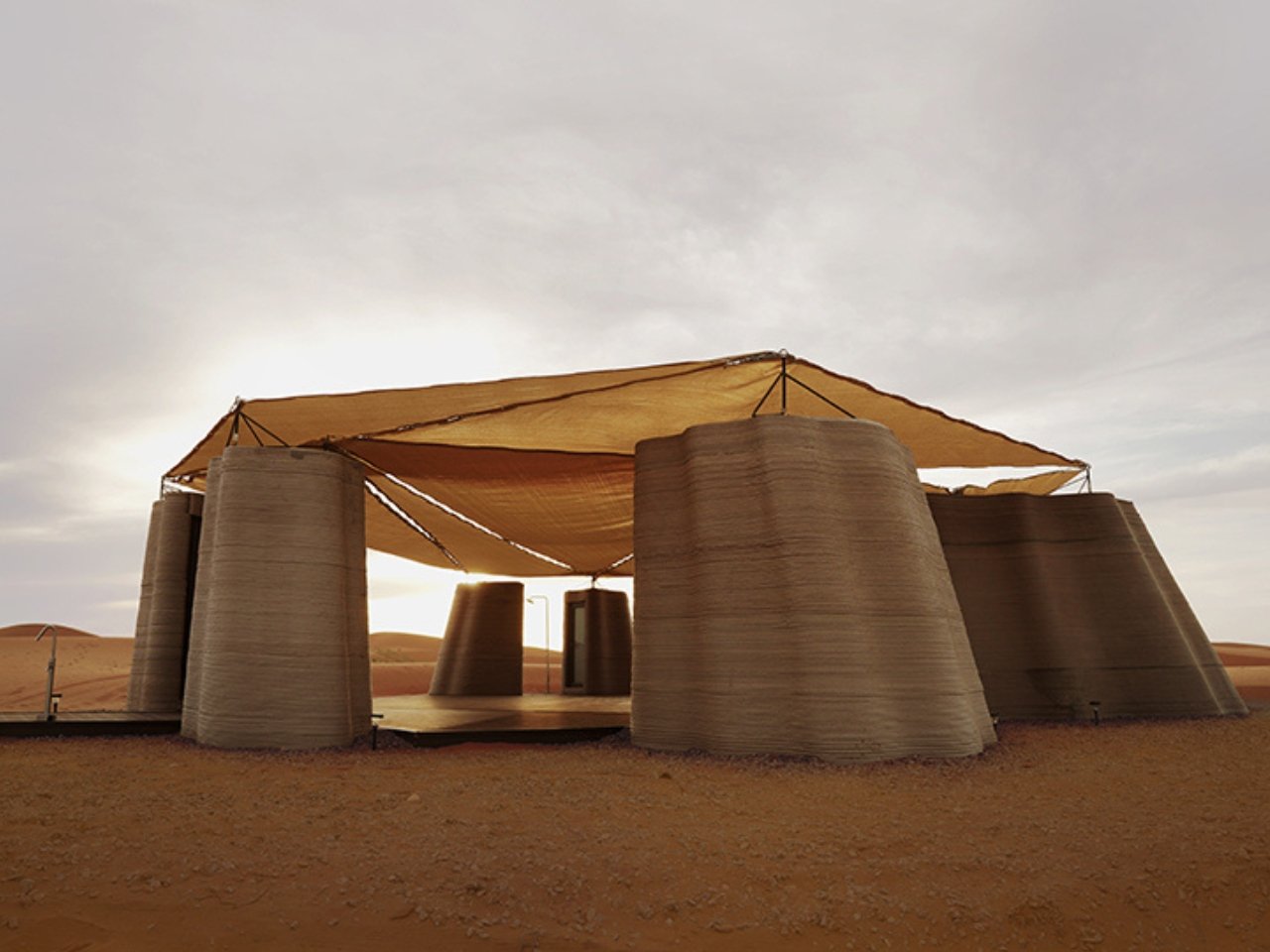Picture this: you’re a volunteer in the middle of Inner Mongolia’s Tengger Desert, planting trees under a relentless sun in temperatures that can swing from 45 degrees Celsius in summer to minus 30 in winter. You’re there to combat desertification, planting forests that will lock the desert in place and prevent sandstorms from spreading eastward. It’s heroic work, but let’s be real, the conditions are brutal.
Enter Desert Ark, and suddenly this story gets a whole lot more interesting. Created by Chinese design studio designRESERVE, Desert Ark is China’s first 3D-printed concrete structure in an extreme desert environment, and it’s basically a game changer for anyone working in hostile landscapes. The project is a modular shelter system consisting of nine separate units that include everything volunteers need: a shower room, dining area, and sleeping quarters. Think of it as a base camp that was literally printed into existence.
Designer: designRESERVE
The whole setup spans 150 square meters, with the individual modules arranged in a circle around a central communal space. It’s smart design that creates both private functional areas and a shared hub where volunteers can gather, which is essential when you’re dealing with the psychological challenges of working in such an isolated, extreme environment.
But here’s where it gets really cool from a tech perspective. These structures weren’t built in a traditional way. They were 3D-printed using robotic construction technology with a sand-based concrete material. The walls feature a distinctive wavy external shape that’s not just aesthetic, it’s engineered to better withstand the punishing desert winds. And that layered texture you see from the printing process? It actually helps the structures blend seamlessly into the sandy landscape, like they were always meant to be there.
The designers also tackled the temperature extremes head-on. The walls incorporate built-in cavities that provide insulation, offering relief when it’s scorching hot or freezing cold. This kind of thoughtful detail makes the difference between a structure that merely exists and one that actually protects the people using it.
What makes Desert Ark particularly fascinating is how it sits at the intersection of multiple urgent conversations happening right now. There’s the environmental angle: since the early 1990s, a non-profit organization has been working to plant trees on the desert’s fringe to contain its eastward expansion. These reforestation efforts are part of creating what’s called a “desert-locking forest,” and they’re essential for combating desertification and reducing sandstorm risks.
Then there’s the technology story. 3D printing construction isn’t exactly new, but applying it in such an extreme environment, with limited resources and tight timeframes, demonstrates the potential for rapid, resilient, and low-impact building. The fact that they pulled this off in one of the harshest places on Earth is a proof of concept that could influence how we think about emergency shelters, remote research stations, and disaster relief structures.
And if you want to get really ambitious with it, the designers themselves suggest that Desert Ark could serve as an architectural prototype for future extraterrestrial habitats. It sounds like science fiction, but when you think about it, the challenges are similar: extreme temperatures, limited resources, the need for rapid construction, and isolated locations where traditional building methods are impractical.
The project has been gaining recognition in the design world, earning a spot on the shortlist for Dezeen Awards China 2025. But more importantly, it’s functioning right now, providing real support to volunteers doing essential environmental work. What’s particularly refreshing about Desert Ark is that it doesn’t feel like technology for technology’s sake. This isn’t about showing off what 3D printing can do. It’s about solving a genuine problem for people doing difficult, important work in a place where conventional construction methods would be prohibitively expensive and time-consuming.
As climate challenges intensify and extreme environments become places where more human activity is necessary, whether for restoration, research, or resource management, we’re going to need more solutions like this. Desert Ark suggests that the future of sustainable construction might not just be about building smarter in cities, it’s about building smarter anywhere, even in the middle of a desert where nothing else can survive.
The post 3D Printing Just Built a Shelter in -30°C Desert Heat first appeared on Yanko Design.

